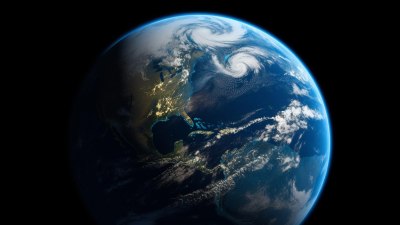How Sandstorms Travel Across Continents Carrying Life and Death
Explore the dual nature of sandstorms, their journey across continents, and their impact on ecosystems and human health.

Image by micloggi76 on Freepik
Sandstorms are powerful atmospheric phenomena that originate in arid regions, where dry soil and gusty winds combine to create immense clouds of dust and sand that can travel hundreds of miles.
The journey of a sandstorm begins on the ground, where wind erosion lifts fine particles of soil and sand into the atmosphere. As these particles become airborne, they coalesce into massive dust clouds that can reach heights of thousands of feet. These clouds are not merely random collections of particles; they are intricately linked with the Earth's climatic systems, influencing weather patterns and ecological outcomes far from their origin.
The Formation of Sandstorms
Sandstorms typically form during dry, windy conditions. The process starts with the intense heating of the ground, leading to rising air currents. This phenomenon is often exacerbated by human activities such as deforestation and agricultural practices that leave the soil bare and vulnerable to erosion. In the deserts of North Africa and the Middle East, for instance, factors like soil type, dryness, and wind patterns are crucial in determining how and when sandstorms will occur.
The Mechanics of Sandstorms
Once initiated, sandstorms can grow in strength. Wind speeds can exceed 100 km/h (about 62 mph), creating clouds of dust that can obscure visibility, disrupt air travel, and even damage crops and infrastructure. The sand and dust transported by these storms can be composed of various minerals, including quartz and feldspar, as well as organic particles that carry elements of life. Rainy conditions preceding a storm can also increase the amount of dust that gets lifted.
The Journey Across Continents
Sandstorms can traverse vast distances, often traveling across continental boundaries. For instance, dust storms arising in the Sahara Desert can be swept up by trade winds and reach as far as the Caribbean and even the southeastern United States, while dust clouds from the Taklamakan Desert can impact air quality in the western United States. These journeys highlight the interconnectedness of global ecosystems and the way natural phenomena can influence far-flung regions.
Carrying Life
While sandstorms are often seen as destructive, they can also carry nutrients vital for life. When dust from arid regions settles in more fertile areas, it can replenish soil nutrients, supporting plant growth. Studies have shown that the nutrient-rich dust from the Sahara contributes to the fertility of the Amazon rainforest, demonstrating how sandstorms play a role in sustaining ecosystems through nutrient transfer.
Impacts on Human Health
Despite the positive aspects, sandstorms pose significant risks to human health. The fine particles can cause respiratory issues, exacerbate existing health conditions, and contribute to environmental problems such as air pollution. In urban areas, dust storms can lead to visibility issues, traffic accidents, and increased healthcare costs due to related illnesses.
Climate Feedback Mechanisms
Sandstorms have implications for the climate system as well. The release of dust into the atmosphere can affect cloud formation and precipitation patterns. These particles act as ice nuclei, which can influence the formation of rain by providing a surface for water vapor to condense upon. This interaction can create complex feedback loops, where dust can both initiate and mitigate climate changes.
Mitigation and Prediction
Understanding the formation and trajectory of sandstorms is crucial for developing effective mitigation strategies. Improved forecasting models now incorporate satellite data, ground observations, and climate predictions to provide early warnings and help communities prepare for the potential impacts of incoming dust storms. Additionally, conservation efforts such as reforestation and sustainable land management practices can help reduce the conditions that lead to sandstorms, minimizing their frequency and severity.
Technological Innovations
Technological advancements continue to enhance our understanding of sandstorms. Remote sensing technologies, such as satellites and drones, are employed to monitor duststorms in real-time, offering data to researchers and weather forecasters. This information is valuable for assessing the storm's potential impact on air quality, agriculture, and human health.
International Cooperation
Sandstorms do not recognize national boundaries, making international cooperation essential in addressing their implications. Countries affected by dust storms must collaborate on research, share data, and implement joint strategies for mitigation and adaptation. The collaboration can involve policy-making, funding for research initiatives, and the development of shared technology.
Adapting to a Changing Climate
With the changing climate, the frequency and intensity of sandstorms are projected to increase, particularly in arid and semi-arid regions. This changes the landscape of human interactions with the environment and necessitates adaptations. Communities must develop tactics to mitigate the negative impacts of dust while maximizing any possible benefits, such as improved soil fertility.
In conclusion, sandstorms are a powerful force of nature, embodying both life and death. Their journey across continents serves as a reminder of the interconnectedness of ecological and human systems. While they can cause significant disruption and pose health risks, they also play vital roles in nutrient cycling and ecosystem support. Understanding and navigating the complexities of sandstorms will be crucial as we face ongoing environmental challenges in a rapidly changing world.











